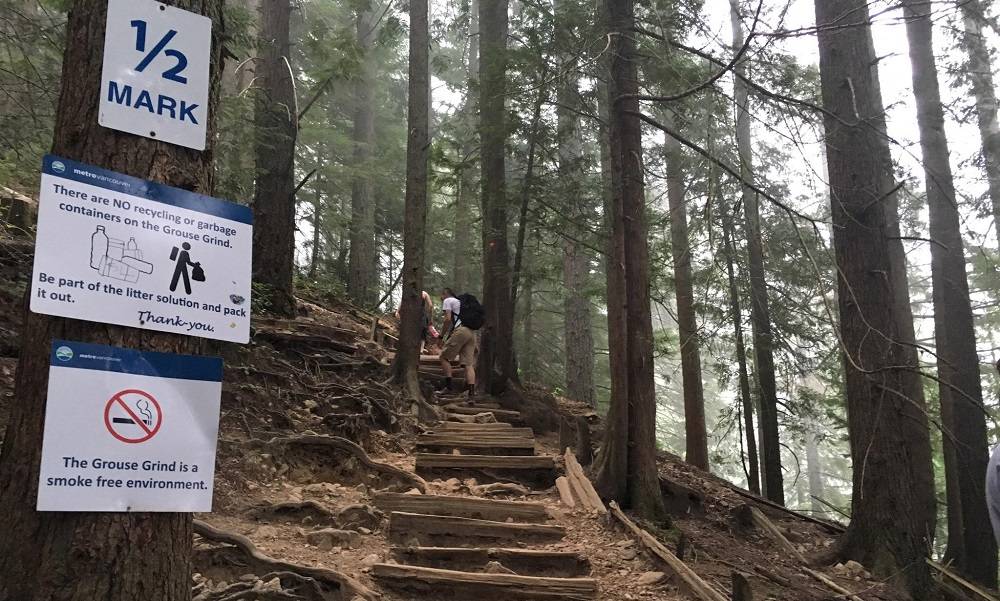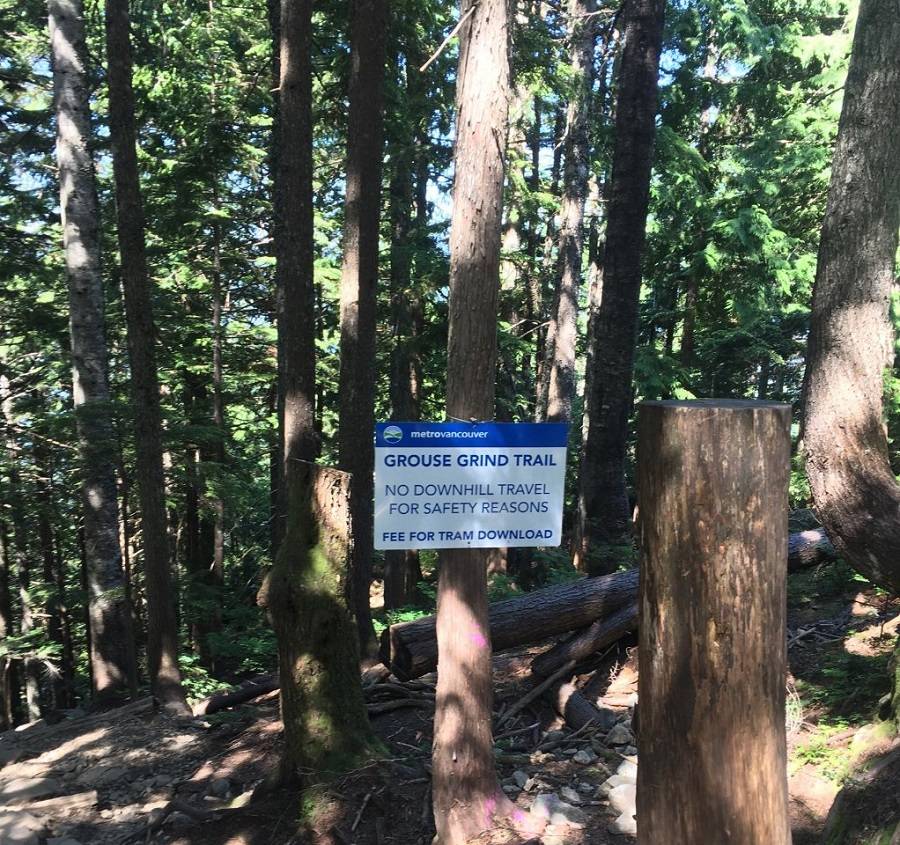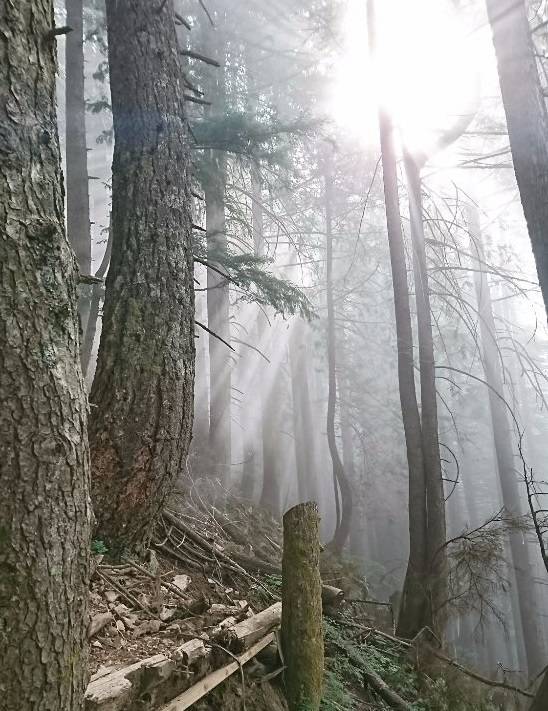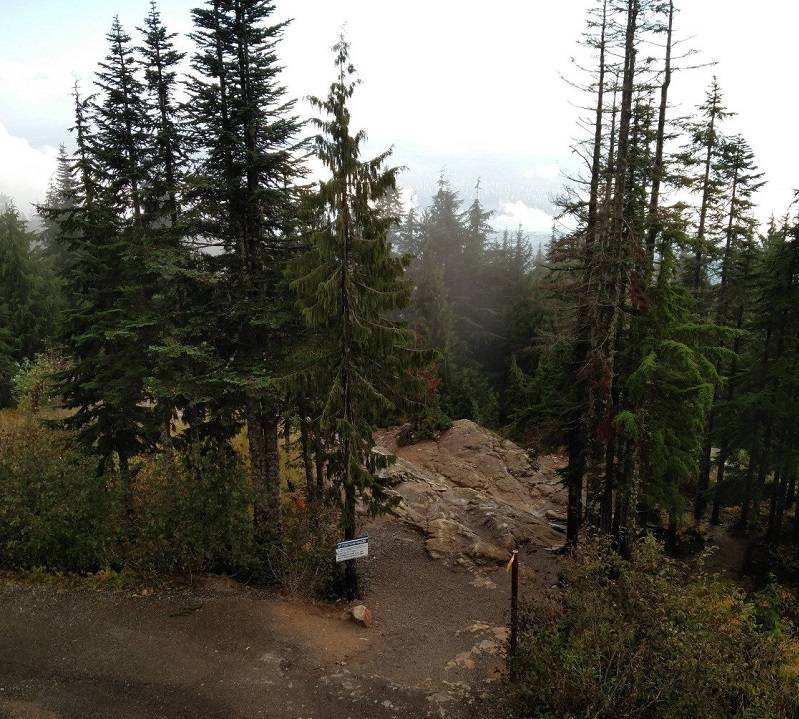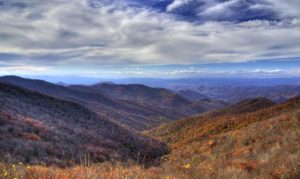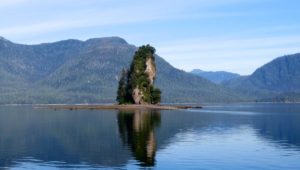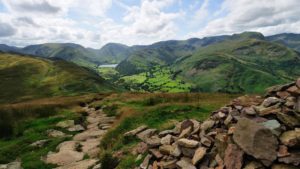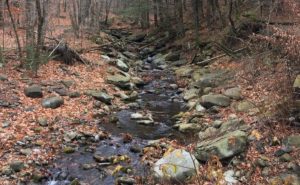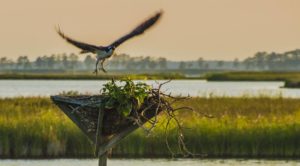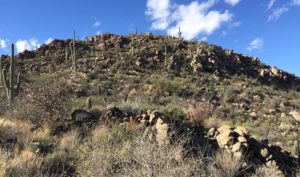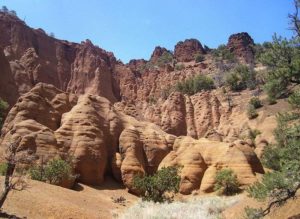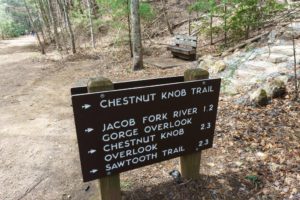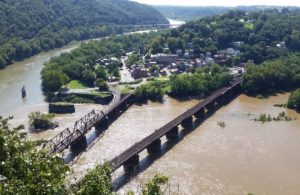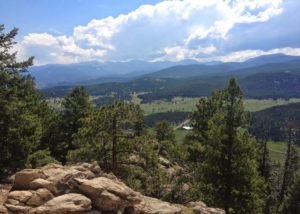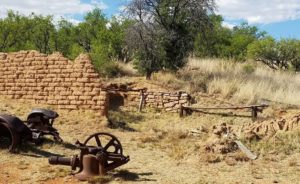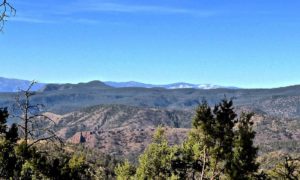The Grouse Grind is an intense outdoor workout that rewards hikers with stunning vistas of Vancouver and the Lower Mainland from the peak of Grouse Mountain.
Only a short fifteen-minute drive from downtown Vancouver, the Grouse Grind is undoubtedly one of the busiest hiking trails in the Vancouver area. Situated on Grouse Mountain in North Vancouver, British Columbia, the trail originated in the early 1980s as an alternate to the British Columbia Mountaineer Club trail. It was primarily used as a training hike for Vancouver mountaineers and backpackers preparing for longer trips or simply looking for a convenient way to stay in shape. The popularity of the trail really exploded during the 1990s and it was around that time that the trail was renamed the Grouse Grind.
Characteristics of the Grouse Grind Trail
Ask any local Vancouver hiker about the Grouse Grind and they will tell you that it is either one of the best hikes or one of the worst hikes in the Vancouver coastal mountain area. This ambivalence stems from the spoils the summit has to offer versus what a hiker must endure to enjoy to those spoils.
This trail has the odd combination of being extremely steep yet clearly marked and manicured. In fact, some sections of the trail are basically landscaping installations that look more than a little out of place in the middle of a coastal forest but are quite necessary to help ease the increased erosion from the 100,000-plus hikers who use the trail every year.
What is the Grouse Grind Elevation Gain?
From the base of the mountain at 274 metres (900 feet) above sea level, the “Grind” climbs aggressively to its summit at 1,127 metres (3,700 feet) in just 2.9 kilometres (1.8 miles). This 853 metres (2,800 feet) of relentless vertical hiking requires zero technical climbing skill but instead draws heavily upon the stamina and physical fitness of the hiker – hence its nickname “Mother Nature’s Stairmaster”. It is no surprise that this naturally occurring Stairmaster attracts Vancouver’s outdoor fitness crowd – who commonly compete for the fastest completion time (both unofficially, after work and on weekends, and officially, at an annual race that takes place in the fall). The average hiker will require an hour and a half to reach the summit, while the record for fastest ascent sits at just over 24 minutes.
View from the Top of the Grouse Grind
Although there are few viewpoints on the trail itself, once the summit is attained, the hiker is greeted with some truly amazing panoramic vistas. On a clear day, the summit of Grouse Mountain offers up superb views of the entire Lower Mainland as well as Vancouver Island to the west and the snow-capped Mount Baker to the south.
Adding to the spectacular nature of these views is the fact that they can be enjoyed from the patio of a multi-level chalet that houses no less than three restaurants, a bar, and a cinema dedicated to the natural wonder of Grouse Mountain and the province of British Columbia.
How long does it take to do the grouse grind?
Although quite steep, “the Grind” is a relatively short trail at only 2.9 kilometres (1.8 miles) in length. In light of this fact, it should be viewed more as a run or walk than a traditional hike.
On average, a hiker will require an hour and a half to reach the summit. The quickest way to lower that average time is to avoid carrying unnecessary items while hiking up the trail.
The traditional supplies that one would normally take on a day hike – such as a pack, extra clothing, camping equipment, food, etc. are not necessary on the Grouse Grind. You will be doing yourself a huge favour by leaving all of this type of hiking gear at home.
There is a general rule of thumb with regard to lowering the time it takes to hike the Grouse Grind: hike it as often as possible. This method holds true for a while; however, there will be a point when most hikers find their summit time has plateaued for several hikes in a row. At this stage, it’s worth considering other factors that may aid in the quest for a lower time.
Hike the Grind with a Strategy
Weight and fitness are the main points a hiker should consider but being aware of how you actually hike the trail can affect your time as well. For some hikers, the fastest way of hiking the Grind is keeping a steady pace of short strides and not stopping until the summit is reached. Others prefer to take long strides and jog the flatter sections of the trail. Some hikers take their iPods for added inspiration.
Carry Less Weight for a Faster Time
Clothing and footwear are the other important weight considerations. Be sure to choose light-weight synthetic clothing as opposed to heavier, water-absorbent fabrics like cotton and/or denim. Remember that the majority of the hike is under the cover of a lush west coast rainforest canopy, so rain gear is not necessary.
Furthermore, avoid wearing heavy hiking boots on the Grouse Grind. Wear a pair of runners instead (unless of course you have problems with your ankles and require the extra support).
Keep in mind that this is a very popular and relatively safe trail. It is also very close to civilization thus making common day trip emergency items (such as bulky first aid kits) superfluous. Sunscreen and bug repellent should be used but can be applied at the trailhead and left in your vehicle.
Yet another way to cut some excess weight is to avoid bringing a water bottle. There are places to get drinking water both at the trailhead and at the summit. This might not work for all hikers but should be considered by anyone looking to shed an extra pound or two.
Adopt a Complementary Fitness Routine as a preparation for the Grind
Hiking other trails (such as the Stawamus Chief) or participating in other types of exercise (especially activities that work the opposing muscle groups used on the Grouse Grind) will help round out overall fitness which can potentially help lower your summit times. It almost goes without saying but being aware of your diet will help too.
If you are serious about lowering your time on the hike, getting in shape before the trail opens in late spring is another option. Consult a personal trainer for more information on the different types of exercise to best engage in the winter months when the trail is closed.

